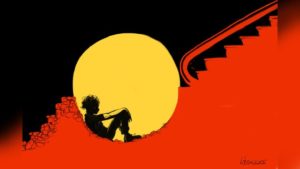Home » Commentary » Opinion » Indigenous prosperity is key to Closing the Gap
· The Australian

A decade ago the federal government launched the watershed Closing the Gap strategy, which set several key targets aimed at reducing the health, educational and economic disparities faced by indigenous Australians.
Ten years later, the strategy is being reviewed in the face of a string of failures and poor outcomes. At the forefront of the review is a desire to build indigenous “prosperity” into the approach.
Some, however — such as the Lowitja Institute — have singled out an alleged over-focus on prosperity as a key flaw in the government’s Closing the Gap strategy. They argue that the attention paid to the drivers of prosperity could impede improvements in the areas of health and education.
They could not be more wrong. In fact, we need more focus on prosperity, not less.
First, only one of the present Closing the Gap targets focuses on economic development — halving the employment gap by 2018. The remaining six targets are all health and education based. And the employment target has expired, with only NSW meeting the requirements.
Moreover, prosperity will be the single biggest driver for bringing indigenous people level with the remainder of Australia. Health and education are inextricably linked to economic outcomes. Prosperity will reduce overcrowded homes and provide a stable environment for children in school. It will enable indigenous people to be able to purchase healthier food and see a doctor more often.
An economy based on employment and business opportunities will provide far better life outcomes for indigenous people than one dependent on a maze of government programs and interventions.
Unsurprisingly, indigenous Australians remain well behind in some of the other key determinants of prosperity. Take the “great Australian dream” of home ownership, for example.
In major cities, 67 per cent of non-indigenous Australians own their own homes, but only 38 per cent of indigenous Australians own their homes — a gap of 29 per cent. In remote areas, ownership rates fall to just 17 per cent, compared with 55 per cent for non-indigenous households.
Owning a home is seen as one of the most important pillars of our society. It helps ward off poverty, especially in old age, and can have innumerable benefits for a wide range of other indicators, including health and education.
Home ownership brings stability and autonomy to Australian families.
Despite the importance of home ownership, the Closing the Gap targets do nothing to address this stark shortcoming. For remote communities, the situation verges on dire. Extreme poverty and complicated land tenure issues mean the problem may take decades to solve — perhaps it’s time to get started?
Indigenous Australians also trail well behind in small business ownership and self-employment, another key pillar of prosperity. In 2016, 17 per cent of non-indigenous people were self-employed. For indigenous people, the figure sits at just 6.6 per cent.
Since 2015, the commonwealth’s Indigenous Procurement Policy has sought to reduce this disparity. However, it is yet to be integrated with the wider Closing the Gap strategy and cannot on its own bring indigenous Australians level with everyone else.
Right now there are 12,000 to 16,000 indigenous businesses. If the gap between indigenous and non-indigenous self-employment was closed, there would be more than 40,000.
In a recent submission to the Closing the Gap refresh, I argued that reducing this gap should be a specific target. However, there is no overarching goal apart from awarding 3 per cent of all procurement contracts to indigenous businesses.
While it will help, government procurement can only do so much. Indigenous businesses must be built to succeed in the open economy. Integrating the IPP into a wider self-employment strategy as part of new Closing the Gap targets will create a clear objective for all to aim at.
When the Council of Australian Governments agrees on new targets later in the year, expect prosperity to be high on the agenda. Expect most indigenous leaders to be on board, too. After decades of failed programs, they know it is time for Aboriginal and Torres Strait Islander people to take control of their own destiny.
If any lesson has been learned from the past 10 years, it will be that there has been too much focus on programs and not enough on economic development. There needs to be less of the former and more of the latter. Otherwise we could be set for another decade of poor outcomes and a gap that looks increasingly unlikely to close.
Charles Jacobs is a policy analyst at The Centre for Independent Studies and author of the report Risky Business: The Problems of Indigenous Business Policy.
Indigenous prosperity is key to Closing the Gap